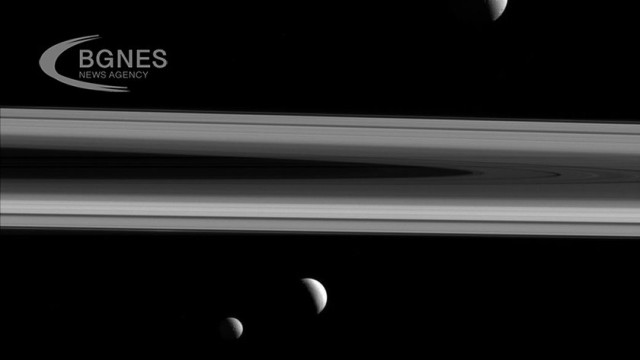The uncanny resemblance to the Death Star from Star Wars may not be the only intriguing thing about Saturn's moon Mimas. It could be hiding a vast ocean of water beneath its striated exterior.
A new look at data from NASA's Cassini probe reveals that the point in Mimas' orbit where it comes closest to Saturn has changed slightly in 13 years, Nature magazine reports.
Because Mimas' internal composition influences the gravitational dance between the moon and its planet, these orbital dynamics, along with some previously observed moon wobbles, suggest a fluid interior, say astronomer Valerie Lainey of the Paris Observatory and colleagues.
"It's a very surprising result," said Francis Nimmo, a geologist at the University of California, Santa Cruz.
This isn't the first time speculation of flowing water has surfaced on the small satellite Mimas. A 2014 study suggested that slight fluctuations in the satellite's rotation could be explained by a water reservoir beneath its frozen shell. Other researchers have dismissed that possibility, arguing that Saturn's gravity would bend the hidden ocean to the point that large cracks would eventually appear in the ice on the moon's surface. No such cracks have been observed.
New calculations suggest that Mimas has an ice shell about 20-30 km thick, followed by an ocean 70 km deep and a solid rocky core. To explain the lack of cracks on the surface, Lainey and his colleagues believe the ocean formed between 5 and 50 million years ago - a geological hiatus that would not provide enough time for major changes in the moon's appearance.
The accumulating evidence convinced some previous skeptics, such as Alyssa Roden, a scientist at the Southwest Research Institute in Boulder, Colo. "I was most skeptical about the existence of a Mimas ocean," she says. "But we really have to go where the data takes us, and it looks like we're looking at a new ocean world," Roden added.
If the ocean hypothesis is confirmed, it would increase the likelihood of hidden seas, such as on the moons of Uranus. The possibility that the ocean is so young geologically also excites Lainey because a future probe could break through the icy outer surface and observe fresh flowing water interacting with the rocky core./BGNES




 24 06 2024.webp)

